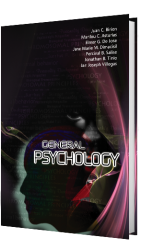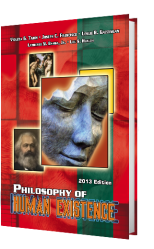Intorduction to Microeconomics
Authors: Olive C. Paraiso, Leonora C. Laraño, and Romeo C. Cuevas
The purpose of this student learning material is to present an understanding of economics as an easy and enjoyable subject This learning material can be an aid to instructors and students because it presents the subject in a manner in which it can be easily understood. It could also prove useful, especially to students as a ready-made lecture notes that could save time spent in note-taking.
Each chapter is discussed and is followed by exercises to check the students' understanding. The series of check-up questions provide students to actively participate in classroom discussions and analyses.
Let this learning material be a guide in learning economics the easier way. This learning material be useful to all those performing in the important task of improving economic understanding and in the appreciation of subject.
Grateful recognition is afforded to our supportive colleague for the untiring motivation with regard to the pursuit of ideals and excellence in extracting ideas and thoughts from both the teaching force and the students.
Related Products
-

General Psychology 2013 (Birion)
Authors: Juan C. Birion, Marilou C. Asturias, Elmer G. De Jose, Jane Marie M. Dimacisil, Percival B. Salise, Jonathan B. Tinio, Jan Joseph Villegas
In writing this book, we believe that an introductory- course in psychology should provide clear understanding of what psychologists study, how they think and how they work. We also have a feeling that the teaching of an introductory psychology should cover wide and general topics fitting for a one-semester course covering as many topics that would be useful especially to those who would embark in advanced studies in this interesting academic field_ That is the reason why fifteen chapters are included in this book touching on topics of interest of the various schools of thoughts with varying perspectives. We do not intend to be eclectic, but we believe that psychology should not be structured and retarded due to boundaries in such a way that would hamper new knowledge and discoveries to emerge. Our understanding of human behavior should be continuing through intensive research and let novel theories and assumptions grow since human activities continue to change brought about by new gadgets and technology.. The student should'. able to gain much knowledge of facts and principles governing human behavior_ This is our gain
This book is truly a group effort. Two psychology professors from the Polytechnic University of the Philippines, Dr. Juan C. Birion who leads the group, together with Prof. Elmer G. De Jose, Assistant to the Vice President for Research; Vice President of Student Affairs of the Rizal Technological University, Dr. Marilou C. Asturian Prof. Jane Marie M. Dimacisil, professor of psychology and philosophy at the University of Perpetual Help-Biñan, Laguna (UPHL); Prof. Percival B. Salise, psychology professor of the University of Manila: Prof. Jonathan B. Tinio, Program Coordinator of the Psychology Unit of the College of Arts and Sciences at Holy Angel University-Angeles City. Pampanga; and Dr. Jan Joseph Villegas, International Lecturer of Psychology and Biological Sciences at the Asia Pacific Region. We were involved in the book's production in one way or another_
This book may not be the perfect book as we envisaged, but it is certainly an adequate representation of the most important areas in psychology. Hopefully, it will advance understanding of human behavior and will lead to newer, snore encompassing and more -useful principles governing human behavior. Its distinct features compared with other books in circulation are the inclusion of topics on history of psychology in the Philippines, and with some special topics on human development, intelligence and cognitive psychology, counseling psychology, social psychology and psychological assessment. Photographs of noted psychologists were illustrated so that students and readers will get familiar to them. Special types of exercises and techniques could help teachers vary in their approaches to teaching and make these approaches interesting and meaningful to students. A general psychology hook should develop in the students the attitude of studying human behavior in a scientific way that psychology is a science. It is to these students that this book is aimed, and it is hoped that the features of the text will help reach its targets.
-

A Simplified Approach to General Psychology 2011 (6 by 9) (Dela Cruz)
Authors: Lucia B. Dela Cruz, Jay R. Amacio, Belinda C. Silverio, Cesar A. Esteban, Jr.
As part of die general education curricula in the tertiary level, General Psychology is one of the most loved courses because of its definite scope in explaining the uniqueness of every human being. Writing a book about the basics in exploring the world of Psychology is both an easy and a difficult task. It is easy because a number of primary and secondary sources of information are available locally and internationally. On the other hand, coming up with a material that specifically attacks the fundamental issues about the discipline is quite an arduous challenge. One would have a hard time deciding which among the bulk of information can provide the target recipients of the publication, comprehensive discussions and cultural applications.
The second edition of this book. “A Simplified Approach to General Psychology,” is a continuous byproduct of the authors' observations and extensive teaching experiences. Additional discussions in the book were provided which still are results of what actually transpired in their respective classrooms. Some changes done in this book were based on the observations and opinions of the students who experienced using this book in the past semesters. The authors realized that there are more significant ideas that should be included in order to satisfy the students' needs.
Relatively, this book will help students to have a practical understanding of related concepts and principles since more real-life examples and visual images are provided. It will be very beneficial to the visual learners. The book's simplicity, however, does not compromise the quality of the discipline; it only made
-

Philosophy of Human Existence 2013 (Tabin)
Authors: Violeta G. Tabin, Joseph C. Francisco, Leslie B. Gazzingan, Lamberto M. Bamba, Jr., Lou S. Hualda
Whenever one asks a student about his/her concept of the word philosophy, one would hear the answer that it is 'difficult,' that there is no relationship with one's course, or it is about pilosopong tasyo wherein one engages himself/herself in an argument that is unsubstantial. Hence, to change this concept in the mind of an individual, the authors have conic up with a textbook that is more student-friendly with the hope that it will help open the minds of an individual to become aware of, realize and appreciate, philosophy as part of one's existence.
The book, Philosophy of Human Existence, is a result of the collaborative effort of the authors to produce a more simplified college textbook on this subject. The book is divided into three parts: Part I — Philosophy of Man and Its Beginnings, which covers the Meaning of Philosophy and Its Branches and Purpose; Part II — Human Person in Relation to His World and His God, which covers Man as He Co-exists with Others and Moral Views on Human Person in the Context of Christian Philosophy; Part III — Issues Related to Human Equality and Relationship, which covers Domestic Violence, Violence Towards Self and Others, and National and International Violence.
The method in studying the nature of man shall be a presentation of the different and varied views or philosophies on the human person. From Western philosophies to Eastern philosophies, and with different ideologies, such as atheists' views, the student's own ideology or philosophy will be challenged using his/her own critical thinking. The Christian philosophy on the nature and condition of man shall be presented as well. Finally, issues and problems on human as he/she relates with his world .and others, both national and international shall also be presented for discussion,

